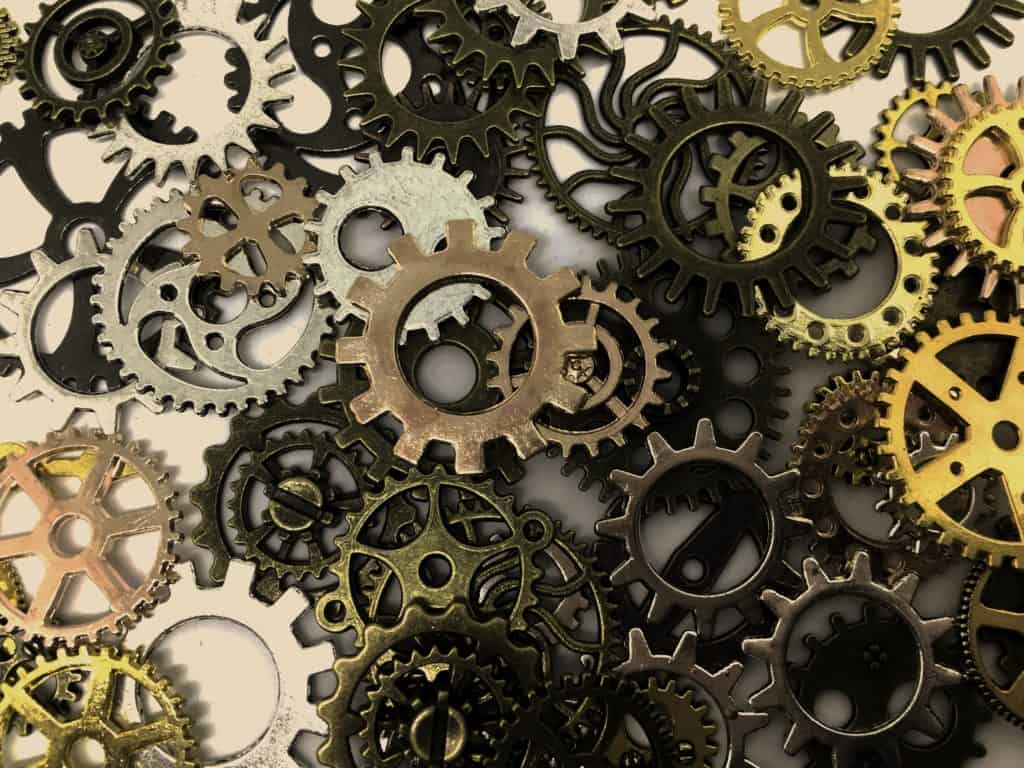When diagnosing driveline problems, one of the bigger challenges can be diagnosing a bad torque converter versus a bad transmission. The symptoms are often quite similar.
Often people think that their transmission is going out, because the symptoms of a bad tour converter are so similar to the symptoms of a bad transmission. The purpose of this article will be to help you distinguish which is more likely to have gone bad, the torque converter or the transmission. We’ll cover common symptoms for both problems, and which is more likely to be the culprit.
Torque Converter Basics
With an automatic transmission the torque converter does the job that the clutch would do in a manual transmission. The main benefit to a torque converter is that the engine will keep running at a standstill.
This is due to the fact that a torque converter provides a hydraulic connection between the engine and the transmission. Whereas, a manual transmission clutch provides a direct physical connection between the engine and the transmission. That’s why at a stop the clutch must be disengaged from the flywheel.
The torque converter bolts to the input shaft of the transmission and uses the same hydraulic transmission fluid that the transmission uses. That’s why you can’t tell which is having a problem by looking at the transmission fluid. But, you can be sure there’s some sort of problem if the fluid has metal flakes.
Automatic Transmission Basics
In automatic transmission uses a complex set of solenoids, gears, valve bodies, and clutches, to do the job the driver would do when shifting a manual transmission. Also, when compared to a manual transmission, an automatic transmission is going to be much more complex.
Since there’s a lot to an automatic transmission, there’s also a lot that can go wrong. The good news is that there’s only so many things that feel the same with a bad torque converter and automatic transmission.
Bad Torque Converter
There are quite a few problems and symptoms that can occur when a torque converter has gone bad. This is a sample of the most common ones. If you would like to see more visit the torque converter problems article on this site. They include:
No Fluid or Low Fluid– a torque converter without transmission fluid is going to be like an engine without gas. It’s just not going to go anywhere. That is to say, that I won’t be able to facilitate the transfer of energy from the motor to the transmission and the car won’t move.
Shuddering– Shuddering is typically a symptom of a bad torque converter. And, it’ll usually happen at a particular engine speed or vehicle speed. So you’ll be driving down the highway and suddenly the car will start to vibrate and if you keep driving faster that vibration will stop.
High Stall Speed– A torque converter’s stall speed is the engine rpm needed for it to engage the engine. This is often one of the symptoms of low transmission fluid. A bad torque converter will often run at a higher stall speed.
Bad Torque Converter Clutches– Modern torque converters will lock to create a true physical connection between the automatic transmission and the engine. This allows the transmission to operate more efficiently at higher RPM. When they go bad the converter will not be able to lock when going down the highway. In this situation, the engine will rev faster than it normally would.
Bad Transmission
There are quite a few problems that can cause a bad transmission. Much more so than a bad torque converter. A torque converter is nothing but a small part of an automatic transmission. The transmission itself has many more moving parts and areas to go wrong.
Delay Going into Gear– If there is a delay from when you push the gear selector into gear, and when you feel the satisfying clunk of the transmission actually going into gear, that’s almost always going to be a transmission problem.
No Vehicle Movement in Gear– This can also can happen with a bad torque converter, no movement in gear is more likely to a transmission problem if there is fluid in the case. Typically, a transmission with low fluid won’t provide movement because it’s not getting enough fluid. That’s usually the difference.
Some Gears Work– anytime a transmission works only in a certain gear or doesn’t get all of its gears to engage, that’s going to be a transmission problem. It could have entered limp mode, or clutches have gone bad in a gear set, etc…
Filthy Fluid– transmission fluid can tell you a lot about the condition of the transmission itself. Taking a look at it will tell you if something is going wrong. Use this guide on transmission fluid color to help diagnose if the fluid is an issue.
Bad Transmission vs Bad Torque Converter
Generally speaking, it is much more likely that a torque converter problem is going to exist across every gear and speed (except a shudder). On the other hand, a transmission problem is going to usually be relegated to a more finite set of conditions. That is to say, it will usually occur in a certain gear or at a certain time.

